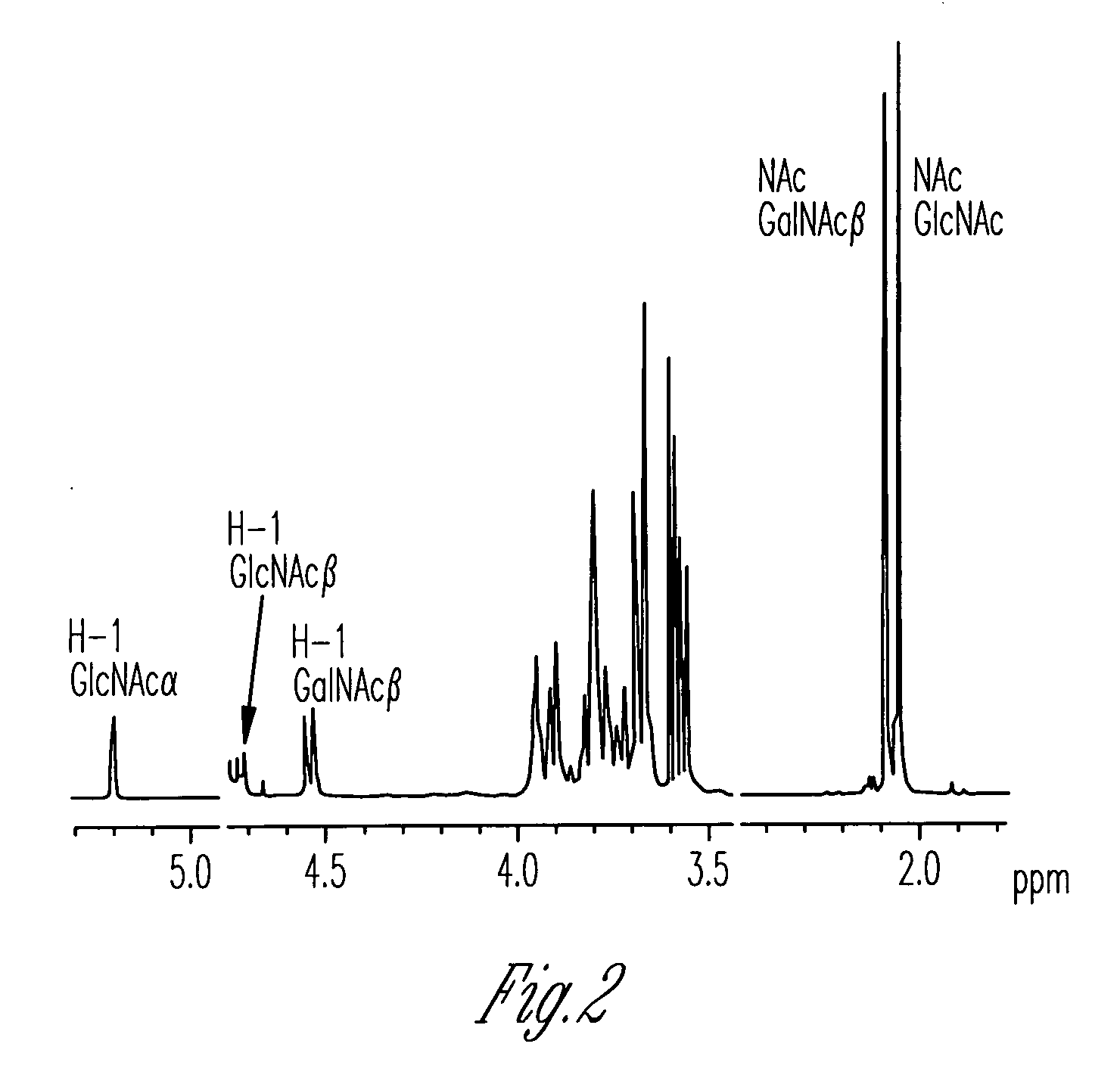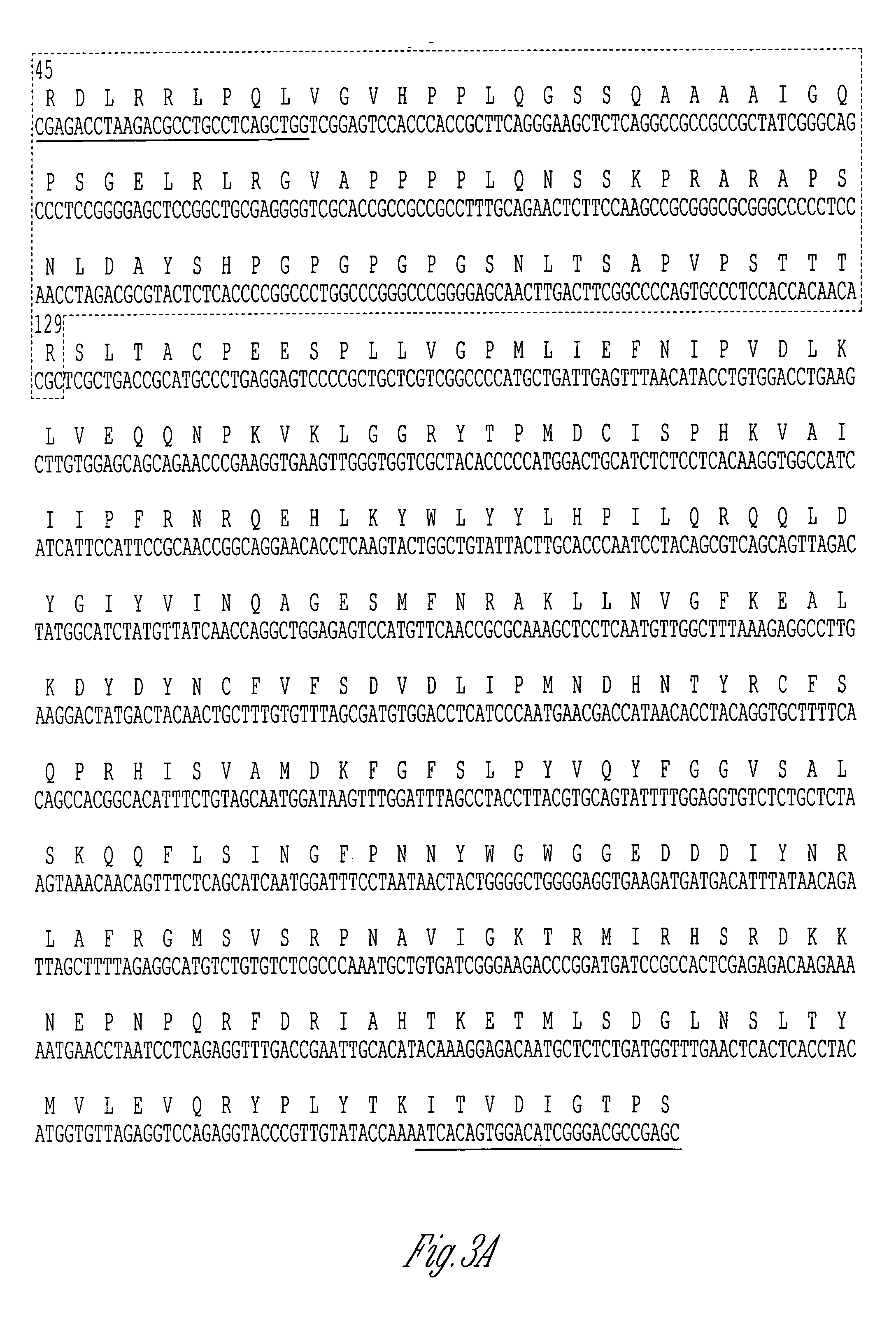Catalytic domains of beta(1,4)-galactosyltransferase I having altered donor and acceptor specificities, domains that promote in vitro protein folding, and methods for their use
- Summary
- Abstract
- Description
- Claims
- Application Information
AI Technical Summary
Benefits of technology
Problems solved by technology
Method used
Image
Examples
example i
General Expression, Mutagenesis, Folding, and Purification of Catalytic Domains of Bovine β(1,4)-galactosyltransferase I
Materials and Methods
[0113] Bacterial growth and plasmid transformations were performed using standard procedures (Ausubel et al., Current Protocols in Molecular Biology, Greene Publishing Associates and Wiley-Interscience, New York (1987)). The plasmid pEGT-d129, which encodes the catalytic domain (residues 130-402) of bovine β(1,4)-galactosyltransferase I, was used for mutation. Site-directed mutagenesis was performed using a CLONTECH site-directed mutagenesis transformer kit. The transformation mixture contained the template pEGT-d129, a selection primer, and a mutagenic primer for creation of a desired mutant. Mutants were screened for the incorporated mutations by looking for changes in restriction enzyme digestion patterns and confirmed by DNA sequencing. The positive clones were transformed into B834(DE3)pLysS cells. The primers were synthesized by the Mol...
example ii
General Expression, Mutagenesis, Folding, and Purification of Catalytic Domains of β(1,4)-galactosyltransferase I Enzymes Having an N-Terminal Stem Region
Materials and Methods
[0128] Restriction endonucleases and DNA-modifying enzymes were from New England Biolabs (Beverly, Mass.). Oligonucleotide primers were synthesized by the Recombinant DNA Facility at NCI-Frederick. The plasmid mini preparation kit was from Qiagen (Santa Clarita, Calif.). Ampicillin, UDP-Gal and UDP-agarose were from Sigma Chemical Co, MO. pET23a vector and BL21 (λDE3) / pLysS competent cells were from Novagen (Madison, Wis.). E. coli XL2-Blue ultracompetent cells were from Stratagene (La Jolla, Calif.). AG1-X8 resin, chloride form, 200-400 mesh was from Bio-Rad (Hercules, Calif.). Taq DNA polymerase and PCR nucleotide mixes were obtained from Boehringer Mannheim.
[0129] Cloning of Bovine and Human Stem-CD Clones of β1,4-galactosyltransferase:
[0130] Two sets of oligonucleotide primers with unique restriction si...
PUM
| Property | Measurement | Unit |
|---|---|---|
| Mass | aaaaa | aaaaa |
| Mass | aaaaa | aaaaa |
| Mass | aaaaa | aaaaa |
Abstract
Description
Claims
Application Information
 Login to View More
Login to View More - R&D
- Intellectual Property
- Life Sciences
- Materials
- Tech Scout
- Unparalleled Data Quality
- Higher Quality Content
- 60% Fewer Hallucinations
Browse by: Latest US Patents, China's latest patents, Technical Efficacy Thesaurus, Application Domain, Technology Topic, Popular Technical Reports.
© 2025 PatSnap. All rights reserved.Legal|Privacy policy|Modern Slavery Act Transparency Statement|Sitemap|About US| Contact US: help@patsnap.com



